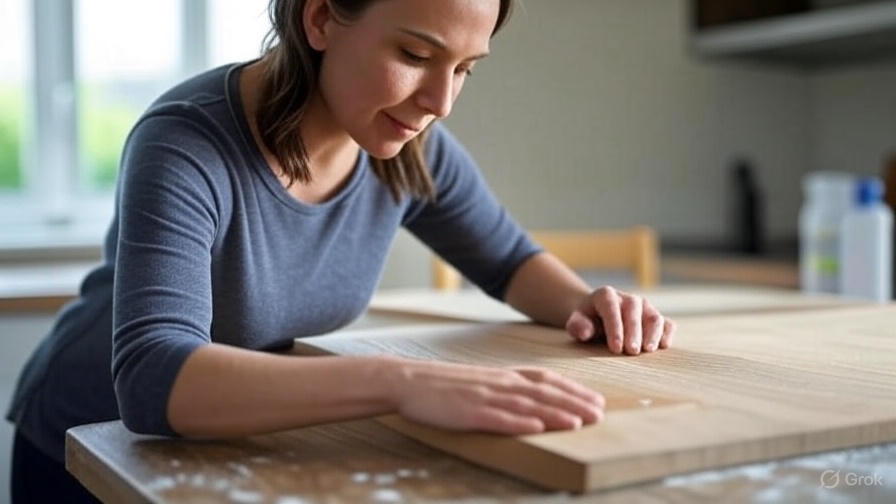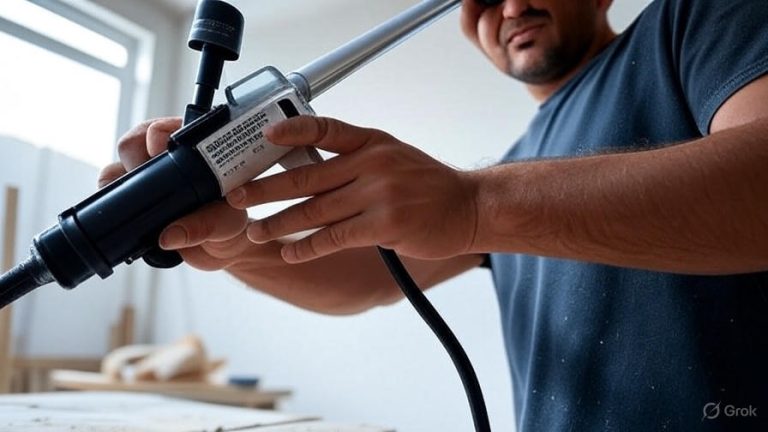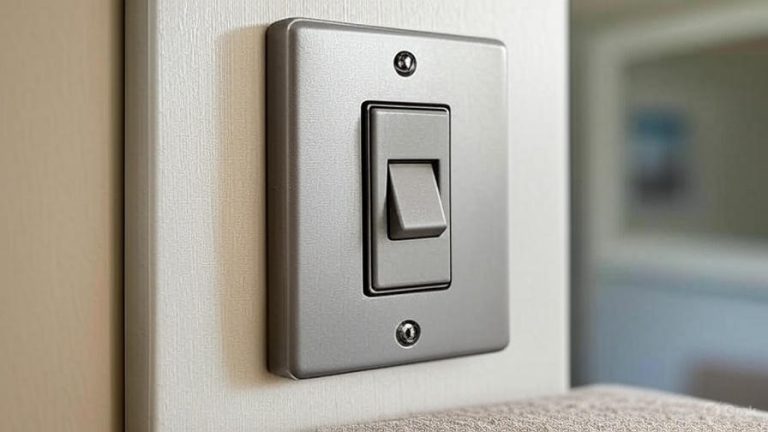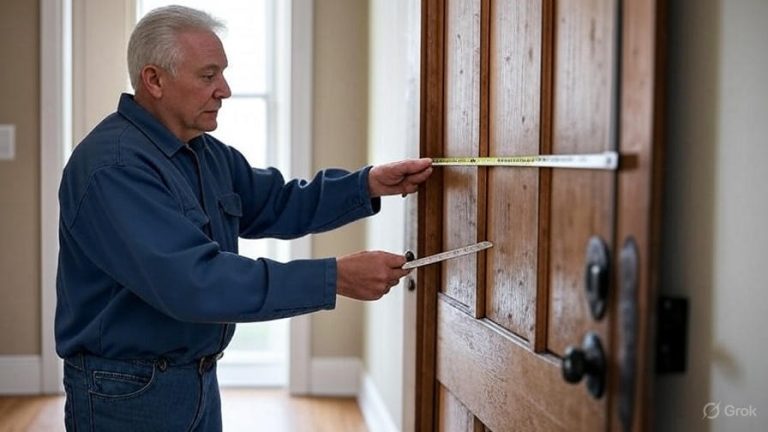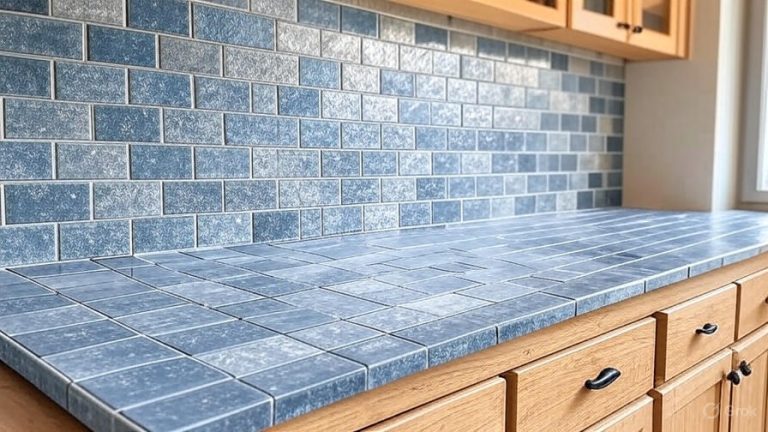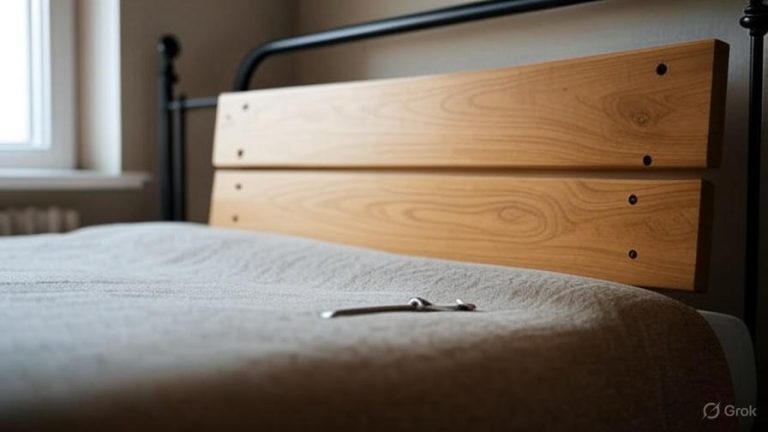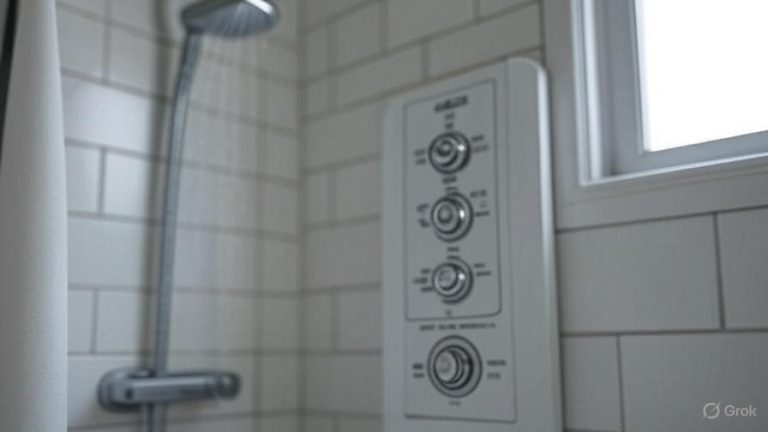How to Remove Heat Stains from Wood?
Heat stains on wooden surfaces can turn your beautiful furniture into an eyesore. Those white rings and cloudy marks appear when hot items like coffee mugs, pizza boxes, or serving dishes make contact with wood finishes. The good news? You can eliminate these unsightly marks using common household items and simple techniques.
What Causes Heat Stains on Wood Surfaces
Hot objects create heat stains by damaging the protective finish on wooden furniture. When temperatures exceed the finish’s tolerance level, moisture trapped beneath the surface creates those telltale white marks. The heat doesn’t actually damage the wood itself – it affects only the top layer of finish.
Different finishes react differently to heat exposure. Lacquer finishes show heat damage more readily than polyurethane coatings. Older furniture with shellac finishes often develops heat stains faster than modern pieces with advanced protective coatings.
The severity of heat stains depends on several factors. Temperature levels, contact duration, and moisture presence all influence the final appearance. Fresh stains typically respond better to treatment than marks that have set for months or years.
Identifying Different Types of Wood Heat Damage
White heat stains appear as cloudy, ring-shaped marks on the wood surface. These stains indicate moisture trapped in the finish layer and represent the most common type of heat damage. White stains usually affect only the surface finish, making them easier to remove.
Dark heat stains penetrate deeper into the wood fibers. These black or dark brown marks indicate more severe damage that has reached beyond the protective finish. Dark stains require more intensive treatment methods and may need professional restoration.
Gray heat stains fall between white and dark damage. They show partial penetration through the finish layer but haven’t reached the raw wood. Gray stains often respond to intermediate treatment methods.
Essential Tools and Materials for Heat Stain Removal
Before starting any removal process, gather the necessary supplies. Most effective treatments use items you already have at home. Basic materials include clean cloths, cotton balls, and soft brushes for application.
Heat sources play a crucial role in many removal methods. Hair dryers provide controlled heat application. Clothing irons offer more intense heat but require careful handling. Heat guns work for stubborn stains but need expert operation.
Cleaning agents vary based on the chosen method. White vinegar, baking soda, and dish soap handle light stains. Stronger solutions like mineral spirits and wood stain removers tackle deeper marks. Always test cleaning products on hidden areas first.
Method 1: Iron and Cloth Technique
The iron method ranks among the most effective treatments for white heat stains. This technique uses controlled heat to evaporate trapped moisture from the wood finish.
Start by placing a clean, dry cloth over the heat stain. Cotton works best because it breathes well and won’t melt under heat. Avoid synthetic materials that might stick to the iron or release harmful fumes.
Set your iron to the lowest heat setting without steam. Steam adds moisture, which contradicts the goal of removing existing moisture. Move the iron in gentle circular motions over the cloth for 10-15 seconds at a time.
Check the stain’s progress between applications. Many white stains disappear after just a few treatments. Stubborn marks might need repeated applications with slightly higher heat settings.
Never apply the iron directly to wood surfaces. The direct heat can create new damage or darken the wood permanently. Always use a protective barrier cloth.
Method 2: Hair Dryer Treatment
Hair dryers offer gentler heat application than irons. This method works well for delicate finishes or antique furniture where you want maximum control over temperature.
Position the hair dryer 6-8 inches away from the stained area. Use the warm setting rather than hot to prevent new damage. Direct the airflow in smooth, overlapping patterns across the entire stain.
Continue treatment for 3-5 minutes while monitoring the wood’s response. The trapped moisture should gradually evaporate, causing the white stain to fade. Some stains disappear completely during the first treatment.
Allow cooling periods between applications. Overheating can damage the finish or create new problems. Multiple gentle treatments produce better results than one intense session.
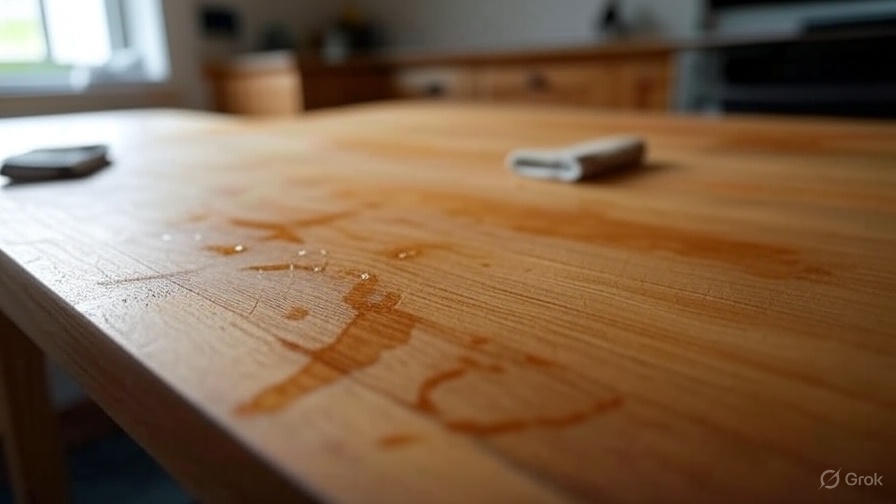
Method 3: Mayonnaise Application
Mayonnaise contains oils that can penetrate wood finishes and help dissolve heat stains. This method works particularly well on light-colored woods and delicate finishes.
Apply a thin layer of regular mayonnaise directly onto the heat stain. Avoid low-fat versions, which lack the necessary oil content. Spread the mayonnaise evenly using a soft cloth.
Let the mayonnaise sit on the stain for several hours or overnight. The oils need time to penetrate the damaged finish and break down the trapped moisture. Cover the area with plastic wrap to prevent the mayonnaise from drying out.
Wipe away the mayonnaise with a clean, damp cloth. Dry the area thoroughly and check the stain’s appearance. Repeat the process if traces of the mark remain visible.
Method 4: Toothpaste Solution
Non-gel toothpaste works as a mild abrasive that can remove surface heat stains. The gentle scrubbing action helps eliminate cloudy areas without damaging the underlying wood.
Choose white toothpaste without gel, whitening agents, or colored stripes. These additives can stain or damage wood finishes. Regular fluoride toothpaste provides the right level of abrasive action.
Apply a small amount of toothpaste to the heat stain using a soft cloth. Rub in gentle circular motions, applying light pressure. The paste should feel slightly gritty but not harsh against the wood.
Continue rubbing for 2-3 minutes, then wipe away the toothpaste with a damp cloth. Dry the area completely and assess the results. This method often requires multiple applications for complete stain removal.
Method 5: Baking Soda and Water Paste
Baking soda creates a natural cleaning paste that can lift heat stains from wood surfaces. This method works best on white or light stains that haven’t penetrated deeply.
Mix baking soda with just enough water to form a thick paste. The consistency should resemble toothpaste – thick enough to stay in place but smooth enough to spread easily.
Apply the paste to the heat stain using a soft cloth or your finger. Cover the entire affected area with a thin, even layer. Let the paste sit for 10-15 minutes to allow the baking soda to work on the stain.
Gently rub the paste in circular motions using a soft cloth. Rinse away the residue with a barely damp cloth, then dry the area thoroughly. The mild abrasive action should lift the heat stain without scratching the finish.
Method 6: White Vinegar Treatment
White vinegar’s acidity can dissolve mineral deposits and help remove heat stains from wood. This method works well on stubborn white stains that resist other treatments.
Mix equal parts white vinegar and olive oil in a small bowl. The vinegar breaks down the stain while the oil conditions the wood finish. Stir the mixture well to ensure proper blending.
Apply the solution to the heat stain using a soft cloth. Rub gently in the direction of the wood grain, not against it. Let the mixture sit on the stain for 5-10 minutes.
Wipe away the solution with a clean, dry cloth. Buff the area to restore shine and check the stain’s appearance. This method often requires multiple applications for complete removal.
Method 7: Commercial Wood Cleaners
Specialized wood cleaners offer concentrated solutions for removing heat stains. These products contain ingredients specifically designed to address wood finish problems.
Read product labels carefully before application. Different cleaners work on different types of finishes and stain severity levels. Some products work only on specific wood types or finish materials.
Test commercial cleaners on inconspicuous areas first. Even products designed for wood can react unexpectedly with certain finishes or stains. Small test applications prevent widespread damage.
Follow manufacturer instructions exactly. Commercial products often require specific application methods, contact times, and removal procedures. Deviating from these instructions can reduce effectiveness or cause damage.
Dealing with Stubborn Deep Heat Stains
Deep heat stains that have penetrated through the finish layer need more aggressive treatment. These dark marks indicate damage to the wood fibers themselves rather than just surface finish problems.
Light sanding can remove shallow penetration stains. Use fine-grit sandpaper (220-grit or higher) and sand gently in the direction of the wood grain. Remove only enough material to eliminate the stain.
Wood bleaching products can lighten deep stains that sanding cannot reach. Oxalic acid (wood bleach) neutralizes dark stains caused by heat and moisture damage. Always wear protective equipment when using chemical bleaches.
Professional refinishing becomes necessary for extensive or very deep heat damage. Furniture restoration experts have access to specialized tools and techniques that can save severely damaged pieces.
Preventing Future Heat Stains on Wood Furniture
Heat protection starts with using proper accessories. Trivets, coasters, and heat pads create barriers between hot items and wood surfaces. Keep these protective items readily available near frequently used furniture.
Table runners and placemats add another layer of protection during meals. These items also enhance your table’s appearance while preventing heat damage. Choose materials that can withstand high temperatures without melting or burning.
Temperature awareness helps prevent accidental damage. Hot serving dishes, fresh-from-the-oven pans, and steaming beverages all pose risks to wood finishes. Allow hot items to cool slightly before placing them on wooden surfaces.
Regular furniture maintenance strengthens heat resistance. Well-maintained finishes withstand temperature changes better than worn or damaged coatings. Clean and polish your wooden furniture regularly to maintain protective properties.
When to Call Professional Furniture Restorers
Extensive heat damage often requires professional attention. Multiple overlapping stains, deep penetration marks, or damage covering large areas exceed typical DIY repair capabilities.
Antique furniture needs special consideration. Valuable or historically significant pieces should receive professional treatment to preserve their worth and integrity. Amateur repairs can reduce antique values significantly.
Exotic wood species may react unpredictably to home removal methods. Professionals understand how different wood types respond to various treatments and can avoid causing additional damage.
Insurance considerations sometimes favor professional repairs. Documented professional restoration work may support insurance claims better than DIY attempts, especially for valuable furniture pieces.
Restoring Wood Finish After Heat Stain Removal
Successful stain removal sometimes leaves areas that look different from surrounding wood. The treated area might appear lighter, darker, or have a different sheen than the rest of the surface.
Touch-up staining can blend repaired areas with existing finishes. Use gel stains for better control and color matching. Apply stain sparingly and build up color gradually to avoid overdoing the correction.
Protective finish application restores full surface protection. Clear polyurethane, lacquer, or appropriate finish types seal the repaired area and match surrounding sheen levels. Multiple thin coats produce better results than single thick applications.
Final polishing integrates the repair with the existing surface. Use appropriate polish products for your specific wood type and finish. Buff the entire surface to ensure uniform appearance and protection levels.
Common Mistakes to Avoid During Heat Stain Removal
Excessive heat application can create new damage worse than the original stain. High iron settings or prolonged exposure can burn the wood or create permanent dark marks. Always start with low temperatures and short exposure times.
Wrong cleaning products can damage wood finishes permanently. Harsh chemicals, abrasive cleaners, or inappropriate solvents can strip finishes or create discoloration. Test all products on hidden areas first.
Aggressive scrubbing damages wood surfaces more than it helps remove stains. Hard pressure, rough materials, or vigorous rubbing can scratch finishes or create dull spots. Gentle, patient techniques produce better results.
Skipping the testing phase leads to widespread damage. Every wood type and finish combination reacts differently to removal methods. Small test areas reveal potential problems before they affect visible surfaces.
Heat stains don’t have to ruin your wooden furniture permanently. With the right techniques and patience, you can restore your wood surfaces to their original beauty. Start with gentle methods and progress to stronger treatments only when necessary. Remember that prevention remains the best strategy for maintaining beautiful wooden furniture for years to come.
The key to successful heat stain removal lies in understanding your specific situation and choosing appropriate methods. Take time to identify the stain type, gather proper materials, and work systematically through proven techniques. Your wooden furniture can look magnificent again with the right approach and careful execution.

